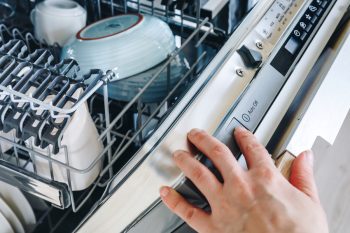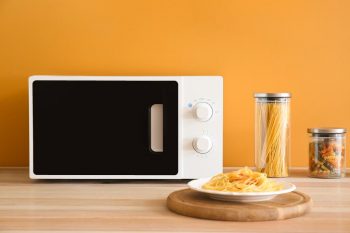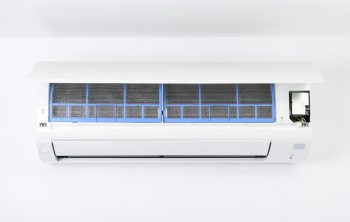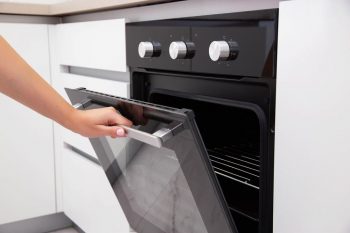
Air frying has gained popularity in recent years due to its ability to mimic the taste and texture of deep frying without the unhealthy oils and fats. But did you know you can achieve the same results with a convection microwave? Yes, it’s possible! In this comprehensive guide, we’ll walk you through how to air fry in a convection microwave, the benefits and drawbacks, and what to consider when purchasing one.
Air frying in a convection microwave involves preparing your food, using an air fry basket or a microwave-safe dish with a raised grid, arranging the food in a single layer for proper air circulation, setting the microwave to air fry mode or using the convection mode at a temperature between 200-220°C (392-428°F), and cooking the food. You may need to flip or turn the food halfway through the cooking process for even cooking. Check for doneness and cook for additional time if needed.
What is a Convection Microwave?
A convection microwave is a versatile kitchen appliance that combines the quick heating ability of a microwave with the browning and roasting capabilities of a convection oven. Unlike traditional microwaves that use electromagnetic waves to heat food, convection microwaves have an additional heating element and a fan that circulates hot air around the food. This hot air circulation is the key to air frying in a convection microwave, allowing your food to achieve a crispy exterior with little to no oil.
How to Air Fry in a Convection Microwave
Air frying in a convection microwave is a straightforward process. Here’s a step-by-step guide:
- Prepare the food: Cut and season the food you want to air fry, such as vegetables, chicken, or fish.
- Use the appropriate cookware: An air fry basket or a microwave-safe dish with a raised grid will allow air circulation around the food.
- Arrange the food: Place the food in a single layer, ensuring there is enough space between the pieces for proper air circulation.
- Set the microwave to air fry mode: Some convection microwaves have a dedicated air fry button or preset programs for air frying. If not, you can use the convection mode and set the temperature between 200-220°C (392-428°F).
- Cook the food: Place the air fry basket or dish with the food in the microwave. You may need to flip or turn the food halfway through the cooking process to ensure even cooking.
- Check for doneness: Once the cooking time is up, carefully remove the air fry basket or dish from the microwave using oven mitts, as it will be hot. Check the food for doneness and, if necessary, cook for additional time until the desired crispiness is achieved.
Foods You Can Air Fry
A convection microwave can air fry a variety of foods, including but not limited to:
- Roasted potatoes and cauliflower
- Flakey fish fillets
- Chicken nuggets
- French fries
- Wings
However, it’s important to avoid foods with a more liquid consistency or wet batters, such as beer-battered cod or cakes.
Benefits and Drawbacks of Air Frying in a Convection Microwave
There are several benefits to air frying in a convection microwave:
- Versatility: Convection microwaves combine the functionality of a microwave with the ability to brown and crisp food like a standard oven.
- Compact size: They are smaller than traditional ovens and can fit on your countertop, saving space in your kitchen.
- Faster preheating: They preheat faster than a standard oven.
- Energy efficiency: Convection microwaves use less energy compared to traditional ovens.
- Larger capacity: Convection microwaves typically have a slightly larger capacity than standard air fryers.
However, there are also a few potential drawbacks:
- Limited temperature range: Many convection microwave models can only reach a maximum temperature of 200°C, which may not be suitable for some recipes.
- Not as powerful as dedicated air fryers: Convection microwaves may not provide the same level of crispiness as dedicated air fryers due to differences in design and heating mechanisms.
- Learning curve: Using a convection microwave for air frying may require some practice and adjustments to cooking times and temperatures compared to using a dedicated air fryer.
Conclusion
Air frying in a convection microwave is a healthier alternative to deep frying and a space-saving solution for those with limited kitchen space. It offers a great opportunity to enjoy your favorite fried foods without the guilt. With a bit of practice and the right recipes, you’ll be able to master the art of air frying in a convection microwave in no time!
Frequently Asked Questions
Can I use any type of dishware for air frying in a convection microwave?
No, you should only use microwave-safe dishware. For air frying, it’s best to use an air fry basket or a microwave-safe dish with a raised grid to allow for proper air circulation around the food.
How do I clean my convection microwave after air frying?
To clean your convection microwave, first unplug the appliance. Then, remove any removable parts such as the turntable and racks. Use a damp cloth with mild dish soap to wipe the interior surfaces. Avoid using abrasive cleaners or scrubbing pads that could scratch the surface. For the removable parts, you can wash them in warm, soapy water. Dry all parts thoroughly before reassembling.
Can I use aluminum foil in my convection microwave?
While some convection microwaves allow the use of aluminum foil, others do not. Always refer to your appliance’s user manual to check if it is safe to use aluminum foil. If it’s allowed, make sure the foil doesn’t touch any of the microwave’s interior surfaces to prevent sparking.
Can I air fry doughnuts in a convection microwave?
Yes, you can air fry doughnuts in a convection microwave. However, the results might not be as fluffy and light as those baked in a traditional oven due to the different heating mechanism. You’ll need to experiment with the cooking time and temperature to get the desired results.
How do I adjust the cooking time for air frying in a convection microwave?
Generally, you’ll need to reduce both the cooking time and temperature when air frying in a convection microwave compared to a standard oven. A good rule of thumb is to reduce the cooking time by 25% and the temperature by 10-20%. However, this can vary depending on the specific food and recipe, so it’s always a good idea to check the food for doneness periodically.











